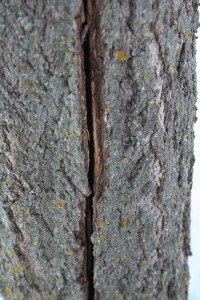Assessing Winter Damage

April really is the cruelest month for gardeners in the North. It’s the time when we see all the damage that has occurred over winter. While brown spots on the lawn, snow mold and dead-looking branches on shrubs (not to mention nibbled branches) are disappointing, most winter damage is not permanent.
Here’s a rundown on what you might see in your yard as you walk around this week.
Snow Mold
Snow mold is a fungal disease that thrives in cold, moist soil and produces tan (sometimes pink) roughly circular patches on your lawn. Most of the time, the disease affects only the grass leaves and will not kill the plant. A light raking will help lift the infected parts of the grass, bring air to the shoots, and encourage growth of the healthy lawn below the mold.
Dead Spots
If you have dead spots of grass, the odds are that these are located near your driveway or the road. If you have a dog, they may also be found near Rover’s favorite spot to relieve himself. In both cases, the killing agent is salt. Many times simply dumping water on the spots (or a heavy rain) will be enough to bring the grass back to life. If your damage is severe, you may want to re-sod or re-seed. On small patches, you can easily seed or use the mixes that come with seed and mulch combined. To apply it, you remove the dead area, rough up the soil, rake it smooth, put down the mix, then water it thoroughly. Make sure the area gets enough moisture – daily waterings at first – either from you or Mother Nature. As long as the weather does not get extremely hot, the seed will germinate and grow rapidly.
Critter Damage
Depending on where you live, you may see raised areas in crazy, curving patterns throughout your lawn. That’s vole damage. Or, your shrubs will have sharp cuts on them as if they were pruned — but not by you. Or the bark has been nibbled off the bottom of a tree. That’s rabbit damage. Deer may browse the lower sections of arborvitae or other shrubs to give them a very strange look. (Check out the image about halfway down on this article.) With critters, prevention works best. Next year, you can wrap trees or put hardware clothe around the bottom of trees to and shrubs to make it harder for critters to eat your plants.
Cracks, Dieback, Dessication
Severely cold temperatures are hard on plants, even those that are hardy to our area. For those who have planted USDA Zone 5 plants, this spring will be an adventure. Our long, cold winter may lead to dieback or just plain death among some zone 5 plants. But even winter hardy trees suffer in severe cold. Cracks may occur in the bark of trees due to the sun heating up the tree enough to stimulate activity in the bark and the cambium layer just beneath it. Then, when the sun sets (or even goes behind a cloud) the temperatures drop, and a crack occurs. This is called sunscald. There isn’t much you can do about sunscald now — the tree will likely heal itself. But next fall, you may want to wrap the trunks of any young or susceptible trees. On shrubs “dessication” is common. This means the needles or branches have dried out and it is most common on evergreen shrubs on the south or southwest side of the house. In some caes, winter burn is severe enough that the plant is best removed, but most of the time, you can cut out the dried areas and give the plant some time. It may well recover on its own.
